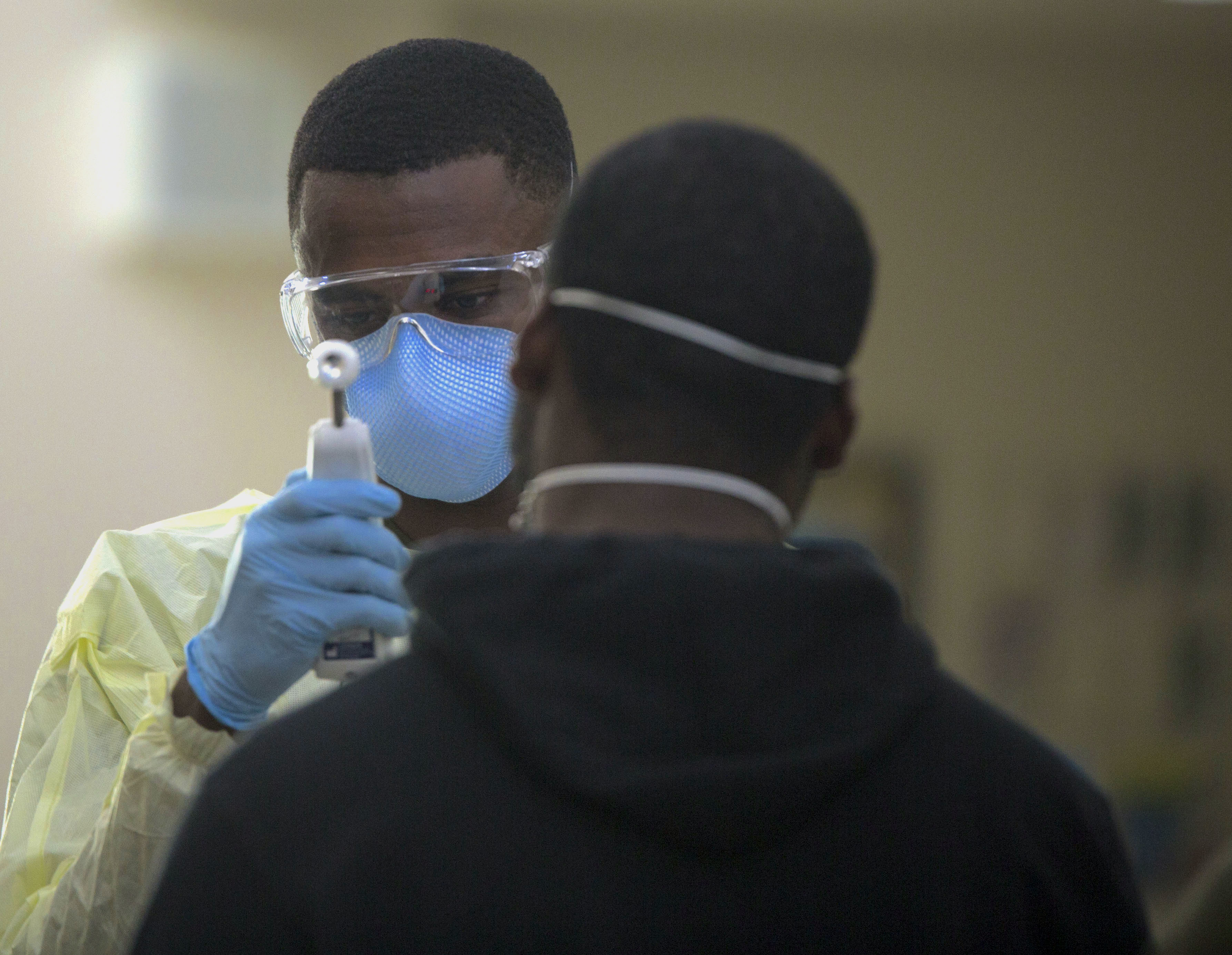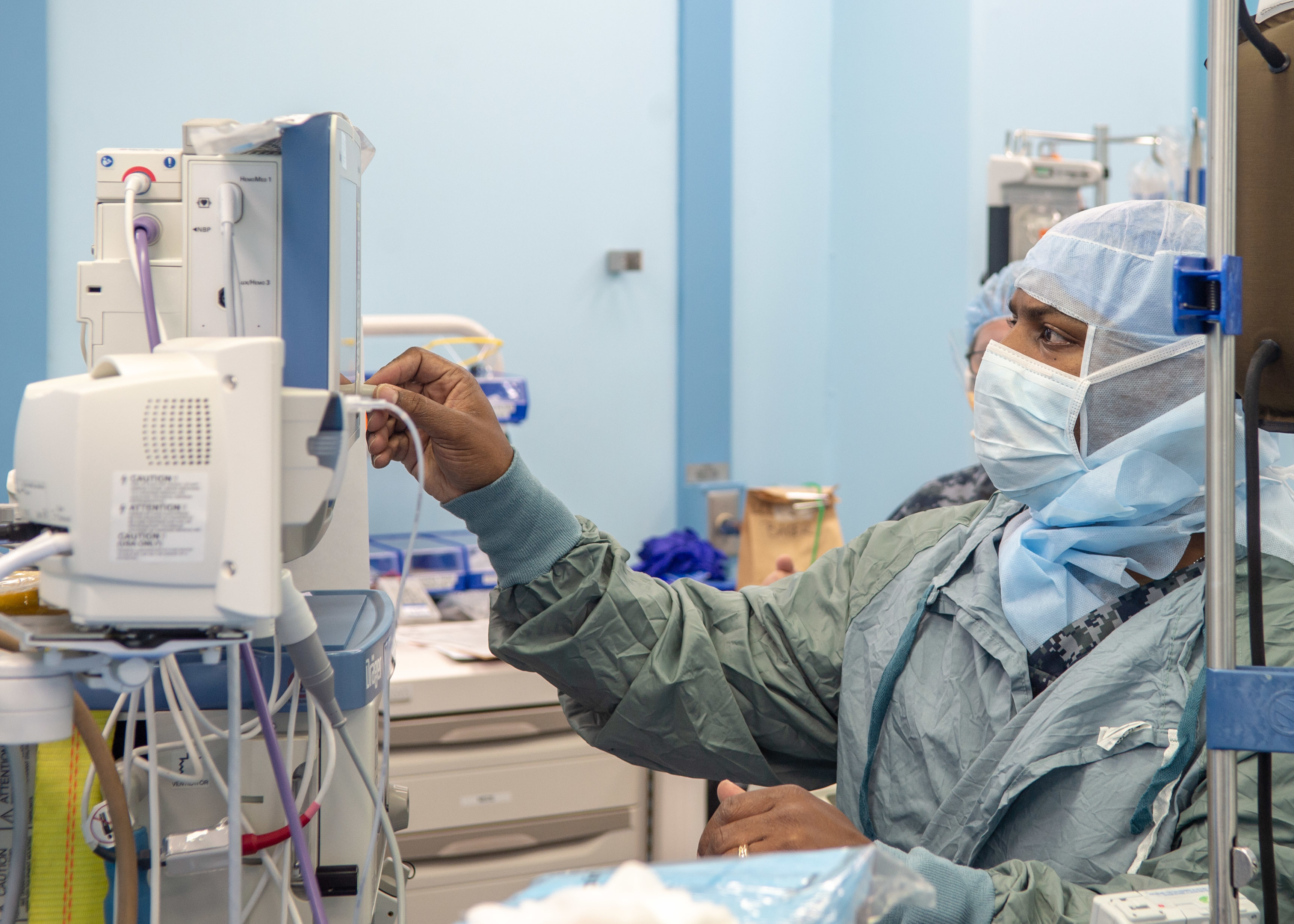
The Navy is reporting 950 sailors have tested positive for COVID-19, and a second sailor from USS Theodore Roosevelt (CVN-71) has been admitted into the intensive care unit at Naval Hospital Guam, the service announced on Tuesday.
The outbreak on the carrier is the epicenter of the Navy’s COVID-19 fight, with 589 cases reported from the crew of 4,800. In addition to the sailor in ICU, three other sailors from the crew are in the hospital. As of Tuesday, 93 percent of the crew has been tested for the virus, with 3,922 negative results. 4,024 sailors have been moved to shore on Guam and are in various stages of a 14-day isolation period in hotels and spare rooms across the island. The service suffered its first death from the virus on Monday, after a Roosevelt sailor who had been hospitalized since April 9 died of complications from the virus. In total, cases on the carrier account for 62 percent of the reported cases in the Navy.
In Los Angeles, seven sailors assigned to USNS Mercy (T-AH-19) have tested positive for the virus and have been quarantined off the hospital ship, according to the service.
“All who were considered to have been in close contact with those crewmembers remain in quarantine off the ship and have tested negative for COVID-19 with the exception of one crewmember who was the fifth confirmed positive case,” reads a statement from the service.
“The ship is following protocols and taking every precaution to ensure the health and safety of all crewmembers and patients on board. This will not affect the ability for Mercy to receive patients at this time.”
Mercy and sister ship USNS Comfort (T-AH-20), currently in New York, have begun treating COVID-19 patients as an adjunct to local hospital systems, the Pentagon announced last week.
The rise in cases in the Navy comes as the service is struggling to keep ship crews healthy and limit the damage the virus can do to operations.

The chief concern is lack of testing that makes it difficult to isolate positive cases and separate them from the rest of a ship’s crew. The problem is made more difficult as many carriers of the COVID-19 virus don’t develop symptoms. Of the 585 cases on Roosevelt, about 400 were found to be asymptomatic.
“What we’ve learned, certainly in the Navy, is that with regard to COVID-19, we’re learning that stealth in the form of asymptomatic transmission is this adversary’s secret power,” Rear Adm. Bruce Gillingham, the surgeon general of the Navy, said during a briefing last week. “We recognize despite really our best efforts we’re going to have to learn how to operate with the virus.”
On Monday, the service took the extraordinary step of keeping the Harry S. Truman Carrier Strike Group at sea in the Atlantic in a move to keep the crews of USS Harry S. Truman (CVN-75), its escorts and Carrier Air Wing 1 healthy in case they need to surge for military operations. While Truman deployed in November, its escorts have been at sea since September, when the carrier was held back from deploying due to maintenance concern. U.S. 2nd Fleet Commander Vice Adm. Andrew Lewis, interviewed by USNI News, did not say when the ship may return to port but hinted it could be weeks.
On the West Coast, the crews of carrier USS Nimitz (CVN-68), its escorts and Carrier Air Wing 17 are nearing the end of a 14-day isolation period before heading to sea for pre-deployment training in order to control the spread of the virus.
While the Navy wouldn’t comment on future operations of the strike group, USNI News understands the strike group may not come back into port before leaving for its planned deployment after completing at-sea training.





